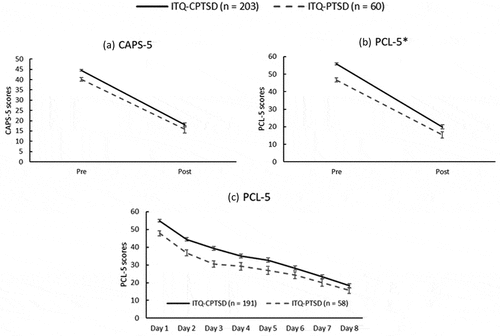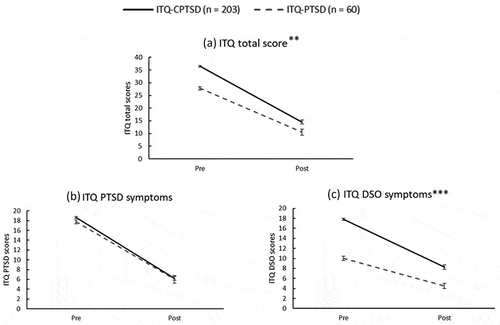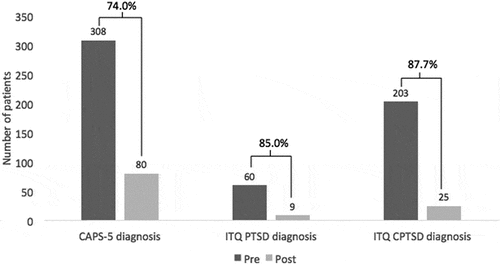Figures & data
Figure 1. Flow chart participants. CAPS = Clinician-Administered PTSD Scale. ITQ = International Trauma Questionnaire.

Table 1. Baseline sample characteristics for the total sample and the ITQ-PTSD and ITQ-CPTSD groups separately.
Figure 2. Mean (a) CAPS-5 and (b) PCL-5 scores at pre- and post-treatment and (c) mean PCL-5 scores during treatment for patients with ITQ-CPTSD and ITQ-PTSD diagnosis. *p <.05, **p <.01, ***p <.001; a significant difference in decline between ITQ-CPTSD and ITQ-PTSD group. Error bars represent standard error of the mean (s.e.m.).

Table 2. DSO symptom cluster scores (AD = Affect dysregulation, NSC = Negative self-concept, DR = disturbed relationships) at pre- and post-treatment in the ITQ-PTSD (n = 60) and ITQ-CPTSD group (n = 203).
Figure 3. Mean (a) ITQ total, (b) ITQ PTSD symptom and (c) ITQ DSO symptom scores at pre- and post-treatment for patients with ITQ-CPTSD and ITQ-PTSD diagnosis. *p <.05, **p <.01, ***p <.001; a significant difference in decline between ITQ-CPTSD and ITQ-PTSD group. Error bars represent standard error of the mean (s.e.m.).


